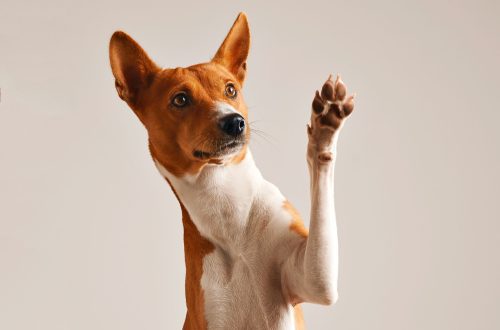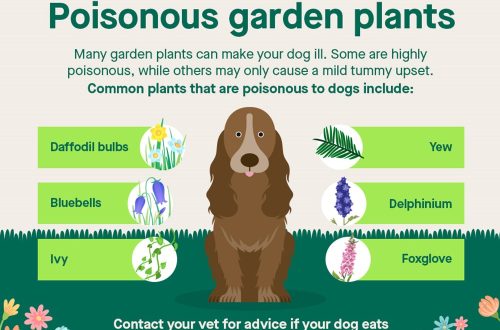
Is your dog happy? 10 common owner misconceptions
Sometimes it is difficult for people to understand what a dog likes, what does not like and why it behaves anyway. Of course, like you and me, all dogs are individuals with their own preferences, so each dog is happy (and unhappy) in its own way. However scientific approach to animal welfare has made it possible to determine the basic needs absolutely any animal, which means that we have the opportunity to assess whether the pet lives well and whether your dog is happy.
Photo: publicdomainpictures.net
However, various myths are still widespread among dog owners, and not always the human concept of happiness coincides with the real well-being of the pet. Paul Mcgreevy and Melissa Starling have identified 10 dog owner misconceptions about whether their dog is happy.
Top 10 owner misconceptions about whether their dog is happy
- Dogs, like people, love to share.. People can rationalize the need to share important resources with other people and appreciate the benefits of sharing with someone. However, dogs prefer to hold on to their property with all their teeth and as tightly as possible. That is why it is strongly not recommended to take away toys or food from dogs if you have not taught the pet to calmly accept such actions on your part (and trust you).
- Dogs always love displays of love from humans.. Very often people show their love by hugging and squeezing dogs. Dogs, on the other hand, are not capable of such manifestations of love; accordingly, they do not always enjoy such signs of attention. Moreover, many dogs perceive hugs and kisses (and in general bringing a person’s face closer to their muzzle) as a threat. The same applies to trying to stroke or pat the dog on the head.
- The barking and growling of a dog is always a threat or danger to a person.. This is the behavior of dogs, the intensity of which increases as the intensity of the stimulus increases. A dog that growls is most often just asking for more space so it can feel safe. And any dog, regardless of upbringing and training level, needs more personal space from time to time. As a rule, dogs use weaker signals at first, but, unfortunately, many dogs have learned the hard way that people are deaf to them and weak signals do not work, so they immediately go to growling.
- The dog will be happy if an unfamiliar dog comes to his house. Dogs are descendants of wolves, which means that it is in their blood to protect what belongs to them. This also applies to the territory of the house and all the resources that are located there. Your four-legged friend is not aware that the guest with another dog, whom you invited so that “dogs can play”, will then leave. He perceives the visit of another dog as an intrusion. So, it is completely logical to expect that, to put it mildly, they will not be happy about this.
- Dogs, like people, love to mess around.. We come home from work and sometimes really appreciate the opportunity to “be a vegetable”, for example, lie on the couch and watch TV shows. However, dogs already spend most of their time at home, and, on the contrary, they enjoy the opportunity to go for a walk. So dogs appreciate a change of scenery much more than passive recreation.
- An unrestrained dog is a friendly dog. “Friendly” is perceived differently by all dogs. And if one dog may perceive an unrestrained relative as an excellent playmate, others may regard such behavior as a manifestation of aggression. And owners of unrestrained dogs are sometimes surprised that some other dogs are completely unenthusiastic when meeting their pet. Some dogs prefer more reserved greetings and need more personal space.
- Dog runs up to someone when he wants to play. Sometimes owners get lost when their dog runs up to a person or other dog in a seemingly friendly way and then growls or even bites them. Perhaps these dogs wanted to get close to someone to get information, to study the object, and not to interact, and some dogs generally like to communicate with strangers, but at some point they can get scared or overexcited. If you notice this behavior in your dog, it is better to withdraw it from unfamiliar dogs or people.
- If you have a large yard, walking the dog is not necessary.. Dogs spend so much time in the house and in the yard that the environment bothers them and they suffer from boredom. Even if you have a large yard, this is not an excuse for not walking. It is important for dogs to get new impressions, communicate with owners, relatives and play. And they love to do it in a new environment, so the time spent outside your yard is the best entertainment for them.
- Dogs intentionally show defiance when they don’t follow your command.. In most cases, if the dog does not obey, he simply cannot do what you require of him. She either doesn’t understand what you want, or she has a much (much!) stronger motivation to do something else. Also, dogs don’t generalize well, so if a dog sits perfectly on command in your kitchen when you’re holding a treat, it doesn’t necessarily mean he’ll understand what your “Sit!” means when he walks in the woods without leash. And even if your dog knows exactly what “Sit” means, but you have only trained in a calm environment at home, it is unlikely that the dog will follow your command when a guest rings at the door or other dogs on the street invite him to play.
- Barking, teeth chattering and tugging on a leash are the first signs of an unhappy dog.. As already mentioned, dogs initially signal their distress and anxiety with weaker signals, for example, avoiding eye contact, licking their lips, raising their paw, tensing their facial muscles. If the person does not see these signals, the dog tries to avoid contact with what is bothering him, and if the person remains deaf, behavioral problems will gradually appear that are more obvious to the inattentive owner – for example, growling or clicking his teeth.
It is very important to be able to understand the language of dogs and correctly interpret what the dog wants to “tell” you. Only in this case you will understand if your dog is happy and how you can make him happy.





